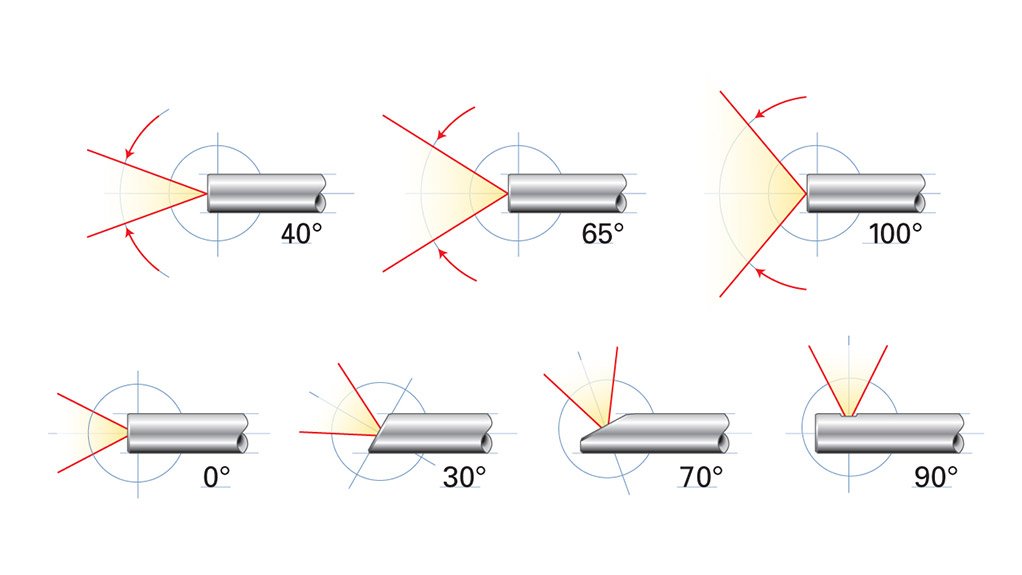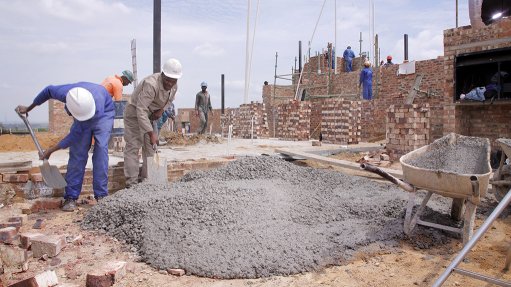Choosing a Hawkeye Borescope...let us assist you!
This article has been supplied as a media statement and is not written by Creamer Media. It may be available only for a limited time on this website.
Choosing the correct borescope for your application, can seem a little daunting. G.P.Agencies are equipped to assist you in identifying the best borescope for you depending on your exact requirements. Below however, you can find a general overview as to what aspects are considered when choosing a borescope.
Answering the following questions will guide you to a decision of which borescope will suit your application:
Is your entry of path straight or curved?
If it is straight then you would require a rigid borescopes. Rigid borescopes give higher quality images, are easier to use and are less expensive than flexible scopes of similar quality. Choose a rigid borescope unless the rigidity is a problem. If there are bends, curves or angles, then you would require a flexible borescope. A flexible fiberscope or video scope lets you see inside spaces that a rigid borescope can't penetrate.
What is your required diameter and length?
The borescope must fit through the smallest hole or access point. When choosing a borescope diameter, consider more than simply clearing the sides of the hole. A slightly smaller scope may allow "wiggle room" so that you can see more by tilting the scope. If you need to see into very small holes and relatively large ones, it is usually best to optimise for each, by using two borescopes. To decide on the correct length, choose a borescope able to penetrate to the greatest depth required, but not so long as to be unwieldy outside the access point.
What direction-of-view (DOV) and field-of-view (FOV) do you require?
Direction-of-View
Take a longitudinal axis through the centre of the body of a rigid borescope, or the tip of a flexible. The direction-of-view is the angle from that axis of the centre of the field-of-view.
Look at your particular application, noting the point of borescope entry and the area to be examined. If the subject is straight ahead of a convenient entry hole a 0° direction-of-view might be best. If the subject is very close to the entry port, like engine valves near a spark plug hole, a backward-looking 120° borescope might be best. When examining a bore, like a rifle barrel, a 90° Mirror Tube will be perfect.
Field-of-View
Field-of-view may be very wide, wide, medium, or narrow. Think of it as a cone coming from the borescope tip, so that anything within the cone is visible. Field-of-View should be dictated by the distance from the distal end of the borescope to the subject, for your application. The wider the field the lower the magnification, and vice versa. If you have plenty of space to move inside the cavity, but want to see both detailed close-ups and big picture views you might choose a 67° moderate wide angle. If the space is more confined but you still need to see most of it at one time, try a 90° extreme wide angle. On the other hand, if you can't get close enough to show the detail you need, a 30° telephoto might be required.
Microscopes and loupes have very limited depth of field — they are only in clear focus at a single distance, so the magnification is also fixed. A borescope, however, has a very large depth of field — often from infinity down to an inch or less — that makes them easy to use without constant refocusing. The closer an object is to the lens of a borescope, the greater the magnification. To calculate magnification, you must know the distance of the subject from the lens. The same principles apply to rigid or flexible borescopes
How much illumination is required?
Illumination is also a very important aspect to take into consideration when ascertaining the correct system you require. Before you can see anything in a dark cavity, you need to cast some light on the subject. Prior to 1960, borescopes used hot and often dangerous incandescent lamps at the distal (working) end. Today, quality borescopes usually use fibre optic illumination, where glass fibres carry light from an external light source through a flexible light guide, then through the borescope, to the distal end. Some inexpensive borescopes still use a bulb at the tip of the scope for illumination, which can lead to illumination, heating and contamination problems. All Hawkeye Borescopes use fibre optic illumination in the scope body and can connect either directly with Mini-Maglite or SuperNOVA LED sources for portable operation or the brighter wall powered Luxxor 35 LED or Luxxor 50 sources.
Are still images or video clips required?
All Hawkeye Borescopes are video capable, either as all-in-one portable units like the Hawkeye Classic Video Borescope and V2 Video Borescope or as a separate accessory when purchasing a rigid or fibre-scope.
Above offers a simplified breakdown of just some of the aspects we look at when assisting you. As there are over 80 models of Hawkeye Precision Borescope to choose from, we also need to take into account aspects such as the working environment, whether your application is a repetitive action, whether your borescope apparatus need to be fixed to a working surface as well as many other areas of consideration. Every day, we assist customers in selecting the right borescope and accessories for their specific application. A trained representative will be very happy to help you.
Lesley Scott
Sales Manager
Cell: 060 529 3823
Email: lesley@hawkeyeborescopes.co.za
Comments
Announcements
What's On
Subscribe to improve your user experience...
Option 1 (equivalent of R125 a month):
Receive a weekly copy of Creamer Media's Engineering News & Mining Weekly magazine
(print copy for those in South Africa and e-magazine for those outside of South Africa)
Receive daily email newsletters
Access to full search results
Access archive of magazine back copies
Access to Projects in Progress
Access to ONE Research Report of your choice in PDF format
Option 2 (equivalent of R375 a month):
All benefits from Option 1
PLUS
Access to Creamer Media's Research Channel Africa for ALL Research Reports, in PDF format, on various industrial and mining sectors
including Electricity; Water; Energy Transition; Hydrogen; Roads, Rail and Ports; Coal; Gold; Platinum; Battery Metals; etc.
Already a subscriber?
Forgotten your password?
Receive weekly copy of Creamer Media's Engineering News & Mining Weekly magazine (print copy for those in South Africa and e-magazine for those outside of South Africa)
➕
Recieve daily email newsletters
➕
Access to full search results
➕
Access archive of magazine back copies
➕
Access to Projects in Progress
➕
Access to ONE Research Report of your choice in PDF format
RESEARCH CHANNEL AFRICA
R4500 (equivalent of R375 a month)
SUBSCRIBEAll benefits from Option 1
➕
Access to Creamer Media's Research Channel Africa for ALL Research Reports on various industrial and mining sectors, in PDF format, including on:
Electricity
➕
Water
➕
Energy Transition
➕
Hydrogen
➕
Roads, Rail and Ports
➕
Coal
➕
Gold
➕
Platinum
➕
Battery Metals
➕
etc.
Receive all benefits from Option 1 or Option 2 delivered to numerous people at your company
➕
Multiple User names and Passwords for simultaneous log-ins
➕
Intranet integration access to all in your organisation




















